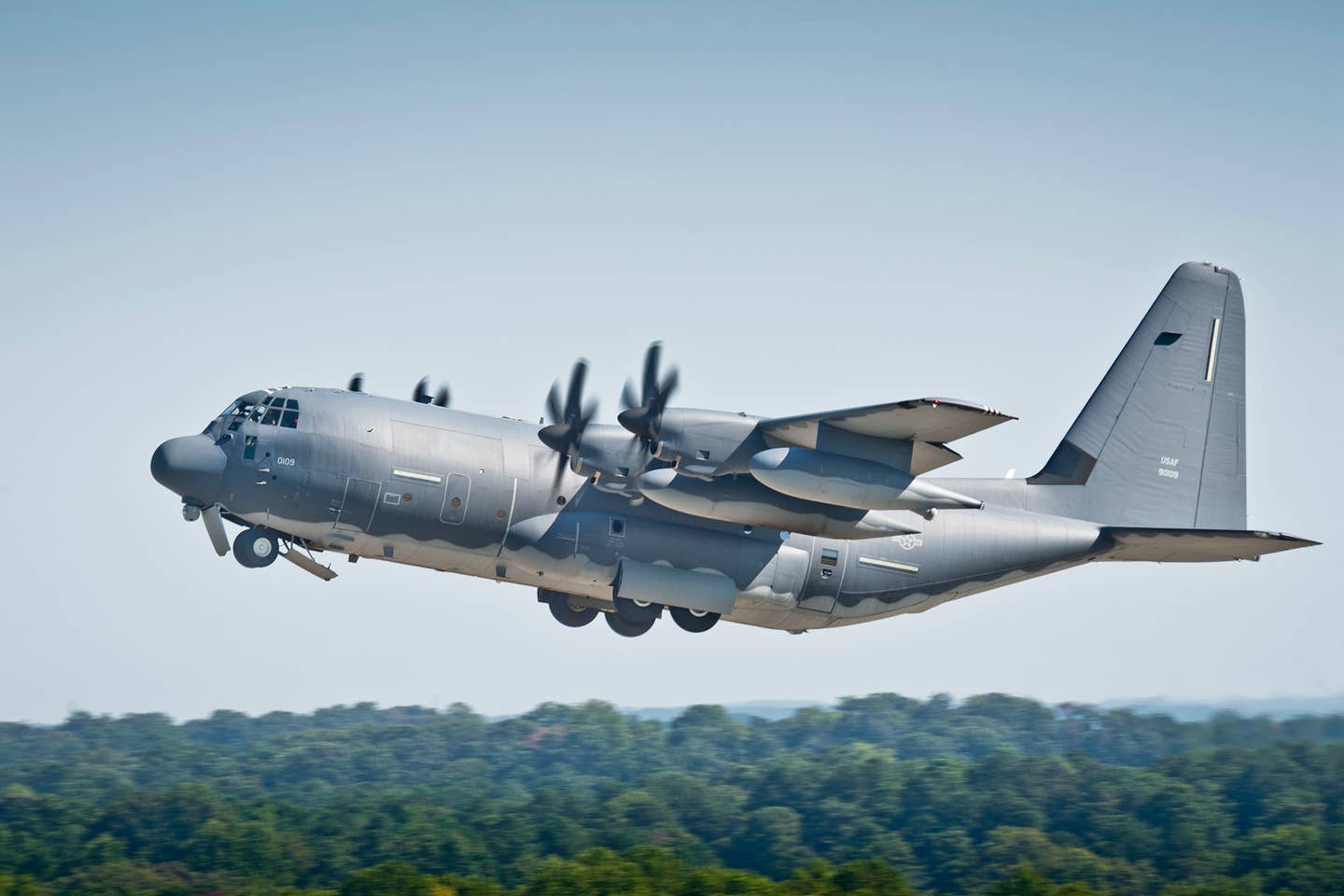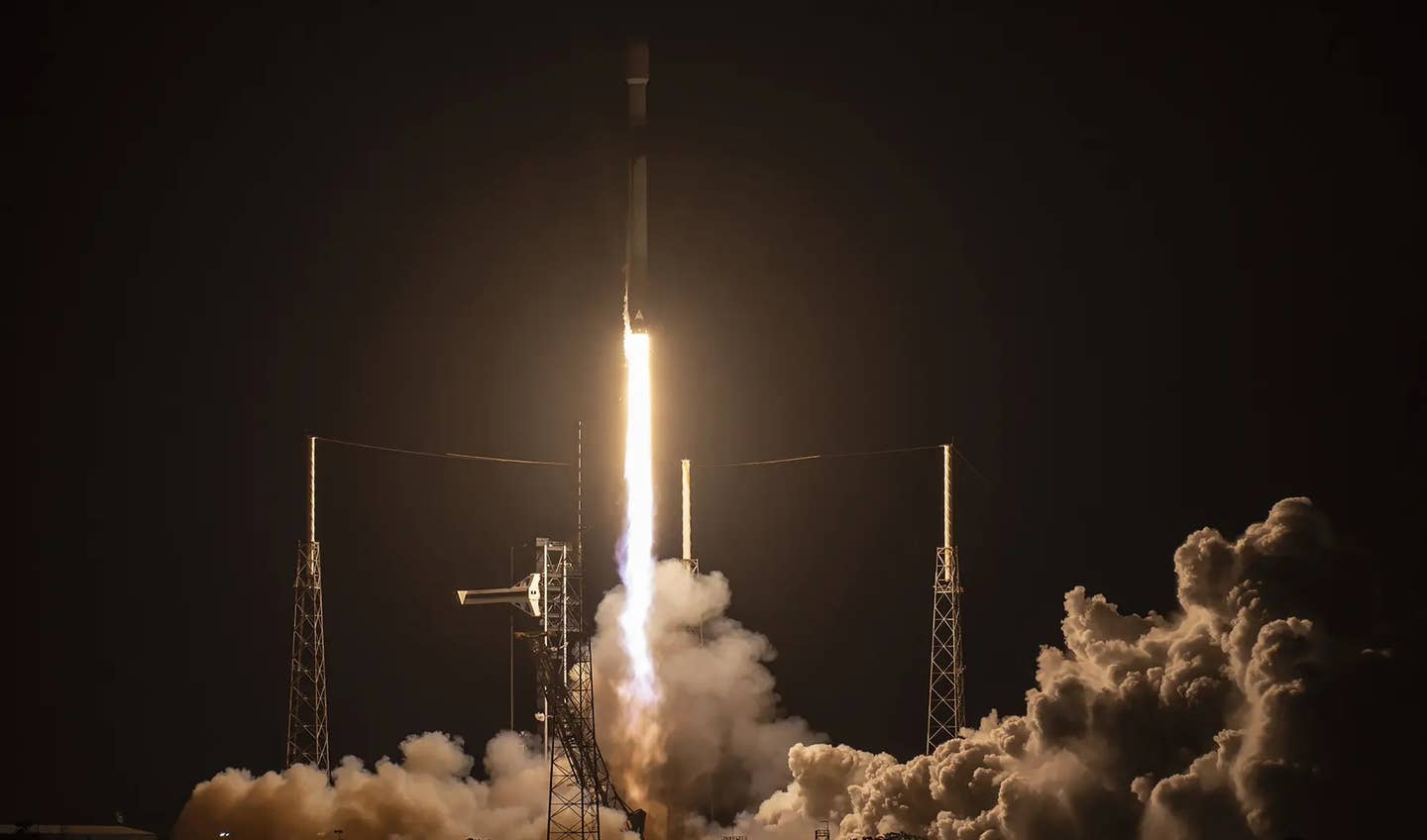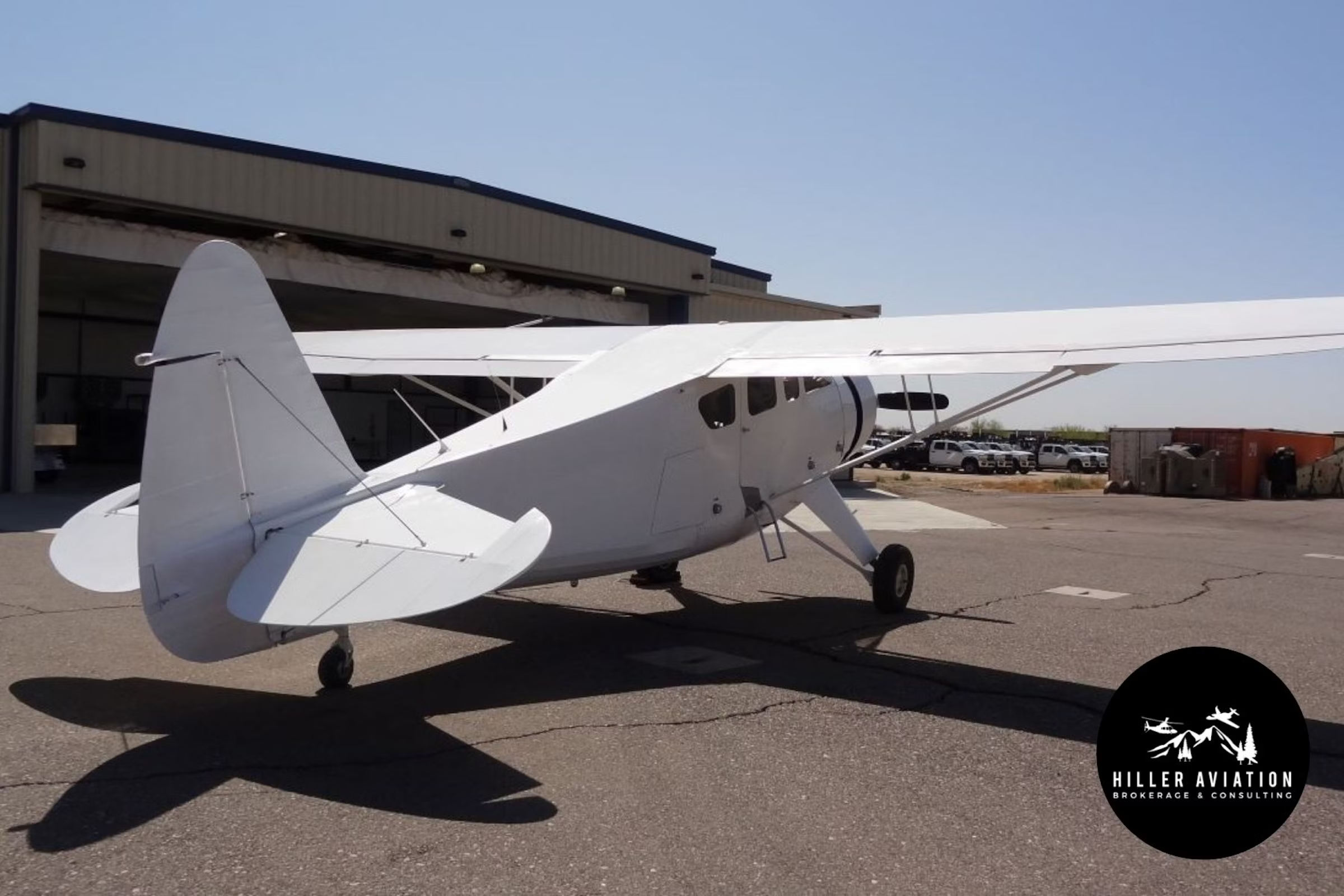
A HC-130J Combat King takes off from the Lockheed Martin facility in Marietta, Georgia. [Courtesy: U.S. Air Force]
The U.S. Air Force successfully dropped a cruise missile armed with a live warhead out of a MC-130J over the Gulf of Mexico on Thursday, the Air Force Research Laboratory (AFRL) announced.
The December 16 test at Eglin Air Force Base Overwater Test Range in Florida was a demonstration of the Air Force’s Rapid Dragon, a program seeking to employ palletized weapon systems from military cargo aircraft.
During the test flight, the Air Force Special Operations Command crew operating the MC-130J received new targeting data, which was then routed to the cruise missile flight test vehicle (FTV).
“The aircraft agnostic Battle Management System’s inflight receipt and upload of the new targeting data into the FTV was a first-time achievement with a live cruise missile,” AFRL said.
The aircrew airdropped a pallet containing the FTV, along with three mass simulants, which were all released in sequence while floating toward the target while under a parachute.
“Safe separation from the deployment box and weapon deconfliction was demonstrated using an unconventional deployment method (nose-down vertical orientation),” AFRL said. “Immediately after the vertical release, the FTV deployed its wings and tail, achieved aerodynamic control, ignited its engine, performed a powered pull-up maneuver, and proceeded toward its newly assigned target. The cruise missile successfully destroyed its target upon impact.”
With the U.S. Air Force, @LockheedMartin ’s Rapid Dragon team demonstrated the feasibility of a palletized strike mission by hitting a vessel with a missile deployed from a mobility aircraft.
— Lockheed Martin News (@lmnews) December 16, 2021
Rapid Dragon, which is led by the Air Force Strategic Development Planning and Experimentation (SDPE) office, seeks to offer commanders a wider range of air strike capabilities at a faster pace.
“This type of experimentation campaign, that address capability gaps and demonstrates transformative efforts, helps us shape future requirements and reduces timeline to fielding,” Maj. Gen. Heather Pringle, Air Force Research Laboratory commander, said in a statement. “This approach ultimately enables a rapid fielding alternative to traditional lengthy acquisition timelines.”
So far, the program has lived up to its name, evolving from a design to a system level flight test in 10 months, with a live-fire demonstration five months later. In the past five months, five flight tests have been conducted out of MC-130J, EC-130SJ and C-17A aircraft.
In September, palletized surrogate Joint Air-to-Surface Standoff Missiles (JASSM-ERs) were dropped from a C-17 and an EC-130 over White Sands Missile Range, New Mexico.
“These Rapid Dragon deployments represent the first end-to-end demonstration of a palletized strike mission, from rolling missile pallets onto an aircraft to in-flight missile release,” Scott Callaway, Lockheed Martin’s director of advanced strike programs, said following the September test. “They are a big step toward showing the feasibility of the palletized munitions concept and the ability of mobility aircraft to augment the strike capacity of tactical fighters and strategic bombers.”
The next Rapid Dragon flight test of a cruise missile live-fire from a C-17 that will demonstrate aircraft agnostic capabilities is slated for spring 2022, Air Force officials said.

Sign-up for newsletters & special offers!
Get the latest FLYING stories & special offers delivered directly to your inbox






